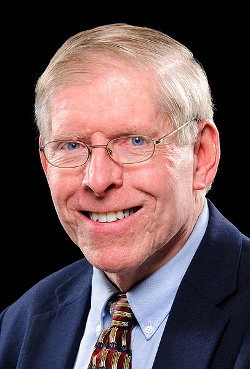A couple of weeks ago, Dave deBronkart says a friend of his was having "such a bad time" in a hospital. "She had to go walking down the hall to find her nurse because a half hour earlier, her IV had fallen out, and she got no responses to her call button," he says.
Although she got help that time, she found herself in the same situation yet again. This time, though, her approach was different. "She tweeted [at] the hospital's Twitter account, and she got a response," Mr. deBronkart says, illustrating how social media has changed the dynamic between providers and patients.
Mr. deBronkart has extensive experience with the power of blogging and social networking as a patient. Also known as "e-Patient Dave," he became a blogger and an advocate for healthcare transformation through patient engagement following his experience being treated successfully for stage 4 kidney cancer at Beth Israel Deaconess Medical Center in Boston.
 Today, Mr. deBronkart has considerable blogging and social media expertise. He has more than 20,000 followers on Twitter as @ePatientDave, and he was one of the social media thought leaders who contributed to the book, "Bringing the Social Media Revolution to Health Care," published by the Rochester, Minn.-based Mayo Clinic Center for Social Media. He was also one of the first people to receive Platinum Fellow designation from the Mayo Clinic Social Media Fellows Program in 2013.
Today, Mr. deBronkart has considerable blogging and social media expertise. He has more than 20,000 followers on Twitter as @ePatientDave, and he was one of the social media thought leaders who contributed to the book, "Bringing the Social Media Revolution to Health Care," published by the Rochester, Minn.-based Mayo Clinic Center for Social Media. He was also one of the first people to receive Platinum Fellow designation from the Mayo Clinic Social Media Fellows Program in 2013.
Before he became a well-known healthcare advocate, he worked in marketing, and he says social media presents a great opportunity for hospitals and health systems to connect with their patients. He shared the following three insights into how social media has influenced healthcare and how providers should approach social networks.
1. Listening and conversing are better than broadcasting. Picture a blaring megaphone. That's how not to use social networks, Mr. deBronkart says. "It's not for broadcasting," he says. "The absolute classic wrong way to use social media is to announce your latest press release."
By far, he says the most "underused value" of social media is listening to what other people are talking about. And the best way to gauge that is by actually scrolling through a Twitter feed rather than relying on analytics. "No matter how many tools you use, though there is no substitute for actually being out there crawling around in the tweets or the blog posts," he says.
Along with listening, effective social media users engage in conversations as a way to build connections with consumers. Mr. deBronkart says being part of a social network is like being at a cocktail party. "Be engaging," he says. "Be a good conversationalist."
2. Joining social networks can open up new avenues of communication with patients. As Mr. deBronkart's friend's experience demonstrates, social media gives providers a chance to establish more efficient and open communication with patients. For instance, Mark Bertolini, CEO and chairman of health insurer Aetna, maintains a Twitter account (@mtbert) "so patients can go around the clutter and talk to him directly," Mr. deBronkart says.
"Anyone can tweet to him, and he responds," he says. "What you can see there, what's happening is the evaporation of traditional obstacles between two people connecting. For somebody who likes stone walls, that's bad news. For somebody who really wants to capture the conversation, and participate in the conversation, it’s a radically different world."
3. Using social networks can help providers adapt to a shifting healthcare system. As the healthcare system transitions to value-based payments and policymakers crack down on wasteful spending, hospitals and health systems must fight to sustain themselves despite the challenges of the shifting system. Mr. deBronkart says healthcare providers looking to survive and thrive "when the waters get choppy" may want to invest in building strong connections with their communities and increasing patient satisfaction.
"A massive social media campaign costs a hell of a lot less than a proton beam machine," he says. "For somebody who wants to be known for being darn good at one thing or another, social media vastly reduces the barriers for getting that message heard."
More Articles on Social Media and Healthcare:
Listening and Learning: 5 Best Twitter Practices for Hospital Executives
10 Ways to Ensure HIPAA Compliance on Social Media
Social Media Safeguards for Healthcare and Regulated Industries

